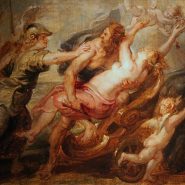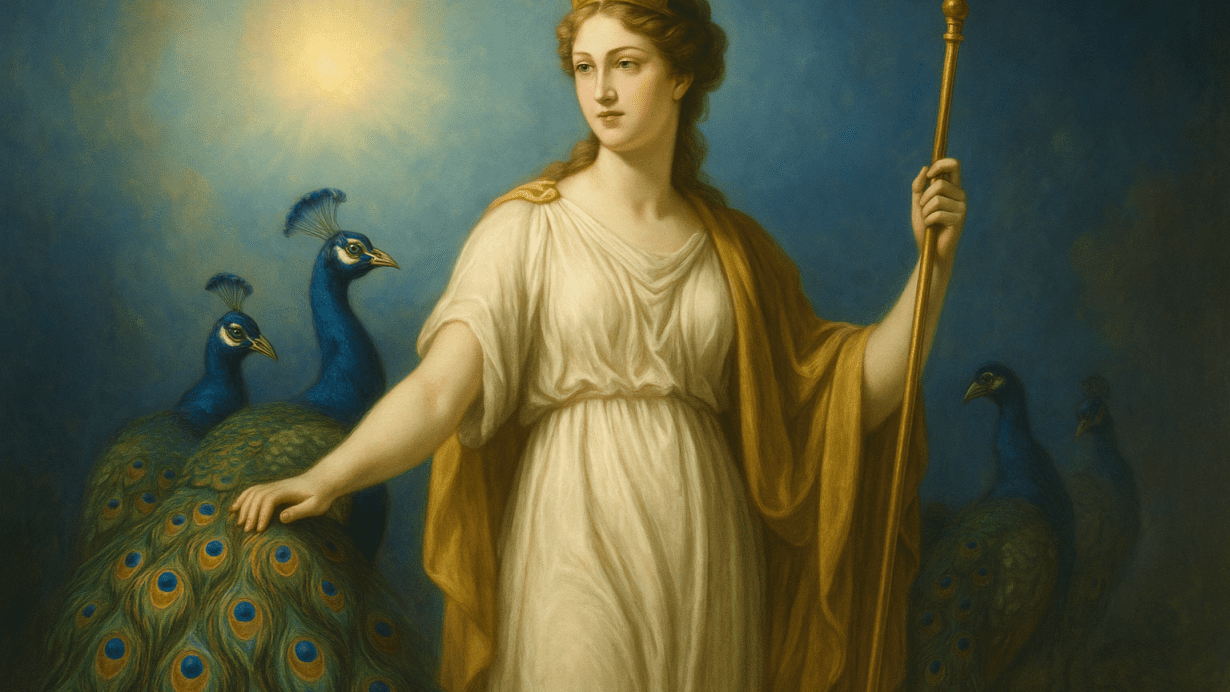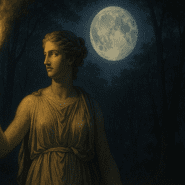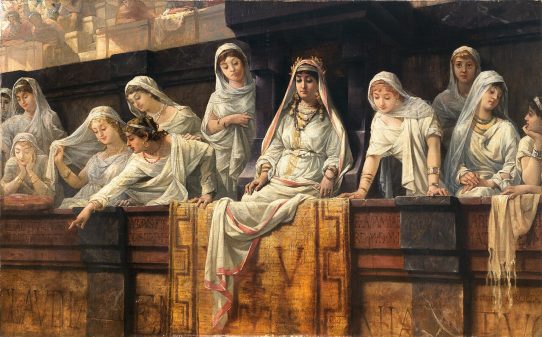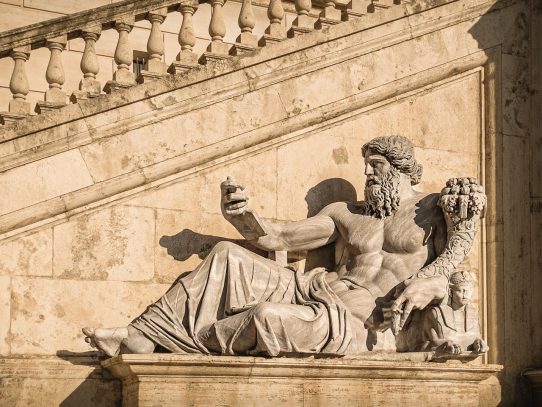Among all the sacred animals of Roman mythology, none shone with such majesty as the peacock of Juno. Its sweeping tail, covered in jeweled eyes, captured the imagination of poets and sculptors alike.
To the Romans, this bird was not merely a symbol of beauty — it was the embodiment of Juno’s divine authority, vigilance, and eternal presence. Its plumage became the living mirror of the heavens, each feather a reminder of the goddess who ruled over women, marriage, and the celestial order itself.
Juno and Her Celestial Companion
Juno, the queen of the gods and wife of Jupiter, stood as the protector of marriage and the guardian of Rome’s women. Regal and commanding, she was the embodiment of matronly dignity and divine power. In both art and worship, she was often accompanied by the peacock — a bird whose radiant feathers expressed her grandeur more perfectly than any crown or jewel could.
In ancient processions and temple imagery, Juno’s chariot was said to be drawn by peacocks. The sight was meant to dazzle the imagination: the queen of heaven gliding through the air, surrounded by the shimmering hues of her sacred birds. These creatures reflected her celestial domain, for their eyes were said to represent the stars scattered across the night sky. In this way, the peacock was both her herald and her symbol — an earthly expression of cosmic beauty.
From Argus to the Heavens
The peacock’s connection to Juno traces back to a story older than Rome itself, inherited from Greek mythology. In that tradition, the goddess Hera — Juno’s Greek counterpart — set the hundred-eyed giant Argus to guard the nymph Io, whom Zeus had turned into a cow to conceal his affair. When Argus was slain by Mercury at Zeus’s command, Hera took pity on her faithful watchman. She plucked his many eyes and placed them upon the feathers of her favorite bird, the peacock.
This myth became the foundation for the peacock’s symbolism in Roman religion. The eyes on its feathers were seen as Argus’s immortal gaze, granting Juno the power of divine watchfulness. The peacock was thus transformed from a mere bird into a vessel of vigilance and majesty—a reminder that the goddess’s awareness could never be deceived or diminished.
Symbol of Immortality and Renewal
To the Romans, the peacock’s divine association went beyond mythic storytelling. Its feathers, which never seemed to fade even after being shed, were thought to symbolize immortality. The bird’s ability to regrow its magnificent plumage each year reinforced this idea, linking it to cycles of renewal and rebirth.
This quality made the peacock a popular symbol in Roman funerary art and early Christian iconography. Long after Juno’s temples had fallen silent, the peacock continued to appear carved into tombs and mosaics, representing the soul’s resurrection and eternal life. In this way, the sacred bird of Juno transcended its pagan origins and became a timeless emblem of continuity between the mortal and the divine.
The Peacock’s Royal Imagery in Roman Art
In Roman art, peacocks were depicted with striking detail — tail feathers spread in dazzling circles, their eyes rendered as tiny suns. They appeared on frescoes, jewelry, and mosaics adorning villas and baths, often symbolizing both luxury and sanctity. Statues of Juno frequently featured one or two peacocks standing beside her or perched upon her chariot.
The bird’s coloration also carried divine significance. The iridescent blues and greens of its feathers evoked both the sea and the sky, linking Juno to the vast expanse of nature’s order. Artists and poets alike described the bird as a reflection of the goddess’s moods: serene yet watchful, proud yet protective. Its cry, sharp and echoing, was said to herald her presence.
In temples dedicated to Juno Regina (“Juno the Queen”), peacock motifs adorned altars and offerings. Priests believed that presenting the bird or its feathers to the goddess brought her favor in matters of marriage, childbirth, and protection of the household. Even among the common people, peacock imagery became a symbol of marital fidelity and divine oversight.
Juno’s Queenship and the Language of Beauty
The peacock’s regal beauty was a natural companion to Juno’s queenship. As the female counterpart to Jupiter, her divinity was not merely defined by power but by poise. The peacock’s stately strut and commanding presence reflected the same proud dignity that the Romans associated with virtuous womanhood and divine authority.
Unlike Venus, whose symbols represented sensual beauty, Juno’s beauty was moral and majestic. The peacock embodied that distinction: an image of splendor restrained by wisdom, magnificence tempered by duty. To Roman matrons, Juno’s bird was a reminder that grace and dignity were as divine as love and fertility.
In a broader cosmic sense, the peacock also symbolized the goddess’s dominion over the heavens. Just as its feathers formed a jeweled canopy, so too did Juno’s power extend across the vault of the sky. When she was invoked as Juno Caelestis, the “Heavenly Juno,” worshippers imagined her surrounded by the iridescent spread of peacock feathers — each one a constellation in her celestial court.
The Peacock Beyond Rome
As the Roman Empire spread across the Mediterranean, the peacock’s symbolism traveled with it. In Egypt, it merged with local traditions of sacred birds, and in Persia, it blended with imagery of paradise and royalty. Later, in early Christian art, the bird’s association with immortality survived the fall of pagan worship. The peacock was depicted in mosaics at Ravenna and in the catacombs of Rome, where it came to signify the promise of eternal life.
Even in modern times, echoes of its ancient role persist. The peacock remains a symbol of pride, resurrection, and incorruptible beauty. Its image continues to appear in heraldry, art, and literature as a vestige of Juno’s enduring mythic influence.
The Sacred Bird’s Enduring Meaning
The peacock of Juno stands as one of mythology’s most enduring symbols — a fusion of divine watchfulness, renewal, and majesty. It bridges the human longing for beauty with the divine principle of order. In its feathers, the ancients saw not only the eyes of Argus but also the countless stars that gleamed in Juno’s celestial realm.
Every iridescent plume spoke of the goddess’s eternal gaze — an awareness that saw through falsehood, protected the faithful, and reflected the harmony of heaven itself. The peacock’s call echoed the voice of divine authority, its strutting form a living emblem of the power and grace that defined Juno’s reign.
To this day, the peacock remains one of mythology’s most luminous creatures, carrying with it the memory of a goddess who embodied dignity, power, and the beauty of divine order.

